Salt, 2014 - ongoing
Salt, water, plastic, wool, concrete
Dimensions variable
For Salt Manual go here
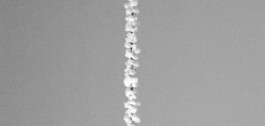
Salt is an installation consisting of PET bottles, wool, water and salt. The actual work is being created in the exhibition space. It is the recording of a process. You could describe it as a kind of salt machine or drafting machine, which consists of a vertical pillar of salt and an underlying drawing. Thanks to the crystallization process and the constant dripping a drawing is created. Many factors play a crucial role to how the drawing will take shape, but also the salt pillars themselves change over the course of the exhibition period. Humidity, heat, but above all the care and diligence of the gallery owner / supervisor, have a major impact on how the work will develop. The exhibition personnel must fill the bottles with the salt solution. The wool threads turn into stalactites, the salt settles down in its crystalline basic arrangement on the floor.
Following this crystallization process a number of times I found influences which would leave a trail in the process. In an abstract way you could see it this way: A material changes by influences and assumes a new form. Thanks to the change in shape I can run back and explore the influences.
What I find so fascinating in the salt crystallization is its stubbornness. Salt is salt. No matter where, when and how. Its pure molecular form will always systematically eliminate all foreign traces. Salt always returns to its clear subterranean formation. It does not take in any change. This stoic independence of salt is a paradox to my understanding of time and the consequent change. It is precisely this characteristic that makes it so appealing as material to register influences of a room. The traces of these influences (such as dust, moisture and touch) are clearly distinct and recognizable from the salt crystals. The interaction of the salt and the external influences ultimately form the work - a unique. Who forms what? What influences a work, the exhibition space, the curator, the technician or the visitor?
Salt | 27.11.14 - 04.01.15 | Pascal Stalder, Philipp Hagen, Thomas Müller, Willi Reutimann | Kunstmuseum Winterthur
Salt, water, plastic, wool, concrete
Dimensions variable

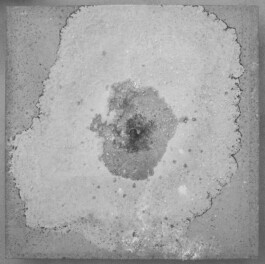
Salt | 05.08 - 27.08.14 | Ulrich Görlich | MFA Förrlibuckstrasse 62 | Zürich
Salt, water, plastic, wool, carpet
Dimensions variable
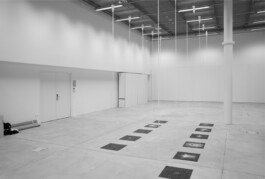
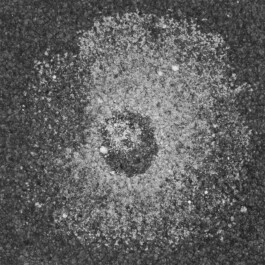
Salt | 25.08.- 11.10.16 | DEKO Waid | Kunst am Bau VIELE FÜR ALLE
Salt, water, plastic, wool, paper, wood, metal
Dimensions variable
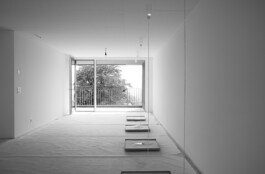
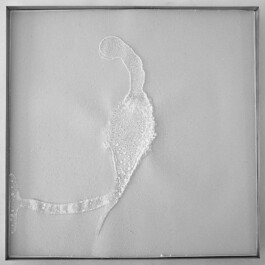
Salt | 21.11.15 - 10.01.16 | Taaniel Raudsepp, Anneli Porri | Tallinna Kunstihoone
Salt, water, plastic, wool, wood, iron
Dimensions variable

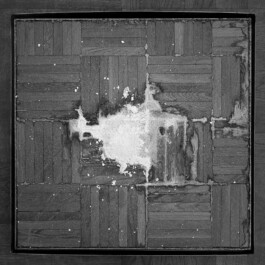
Salt | 17.-29.01.15 | Magda Drozd, Camille Jamet, Lea Loeb, Robert Steinberger | Perla-Mode Zürich
Salt, water, plastic, wool
Dimensions variable
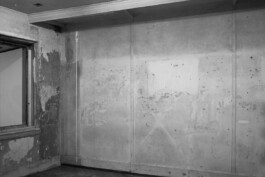
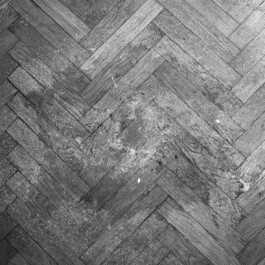
Salt | 14.09. – 3.10.16 | Nela Bunjevac, Patricia Bianchi, Love Stevenson, Haus Konstruktiv, 2016
Salt, water, plastic, wool, concrete
Dimensions variable
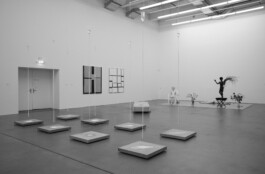
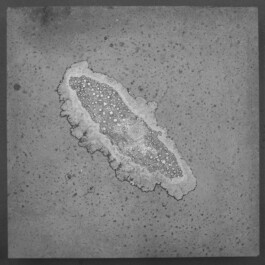

Salt, 2014 - ongoing
Salt, water, plastic, wool, concrete
Dimensions variable
For Salt Manual go here
Salt is an installation consisting of PET bottles, wool, water and salt. The actual work is being created in the exhibition space. It is the recording of a process. You could describe it as a kind of salt machine or drafting machine, which consists of a vertical pillar of salt and an underlying drawing. Thanks to the crystallization process and the constant dripping a drawing is created. Many factors play a crucial role to how the drawing will take shape, but also the salt pillars themselves change over the course of the exhibition period. Humidity, heat, but above all the care and diligence of the gallery owner / supervisor, have a major impact on how the work will develop. The exhibition personnel must fill the bottles with the salt solution. The wool threads turn into stalactites, the salt settles down in its crystalline basic arrangement on the floor.
Following this crystallization process a number of times I found influences which would leave a trail in the process. In an abstract way you could see it this way: A material changes by influences and assumes a new form. Thanks to the change in shape I can run back and explore the influences.
What I find so fascinating in the salt crystallization is its stubbornness. Salt is salt. No matter where, when and how. Its pure molecular form will always systematically eliminate all foreign traces. Salt always returns to its clear subterranean formation. It does not take in any change. This stoic independence of salt is a paradox to my understanding of time and the consequent change. It is precisely this characteristic that makes it so appealing as material to register influences of a room. The traces of these influences (such as dust, moisture and touch) are clearly distinct and recognizable from the salt crystals. The interaction of the salt and the external influences ultimately form the work - a unique. Who forms what? What influences a work, the exhibition space, the curator, the technician or the visitor?
Salt | 27.11.14 - 04.01.15 | Pascal Stalder, Philipp Hagen, Thomas Müller, Willi Reutimann | Kunstmuseum Winterthur
Salt, water, plastic, wool, concrete
Dimensions variable


Salt | 05.08 - 27.08.14 | Ulrich Görlich | MFA Förrlibuckstrasse 62 | Zürich
Salt, water, plastic, wool, carpet
Dimensions variable


Salt | 25.08.- 11.10.16 | DEKO Waid | Kunst am Bau VIELE FÜR ALLE
Salt, water, plastic, wool, paper, wood, metal
Dimensions variable


Salt | 21.11.15 - 10.01.16 | Taaniel Raudsepp, Anneli Porri | Tallinna Kunstihoone
Salt, water, plastic, wool, wood, iron
Dimensions variable


Salt | 17.-29.01.15 | Magda Drozd, Camille Jamet, Lea Loeb, Robert Steinberger | Perla-Mode Zürich
Salt, water, plastic, wool
Dimensions variable


Salt | 14.09. – 3.10.16 | Nela Bunjevac, Patricia Bianchi, Love Stevenson, Haus Konstruktiv, 2016
Salt, water, plastic, wool, concrete
Dimensions variable

